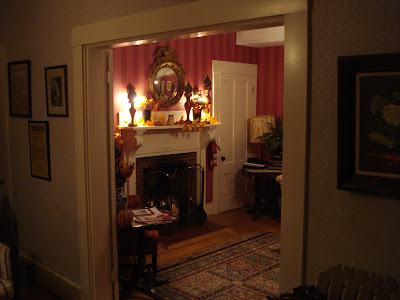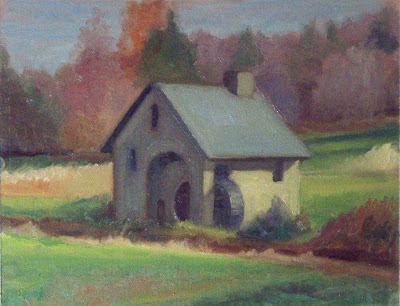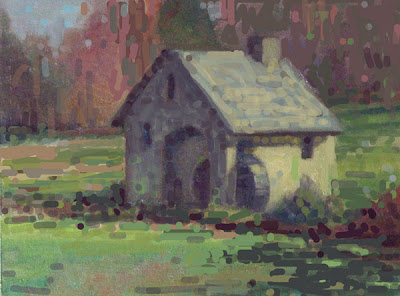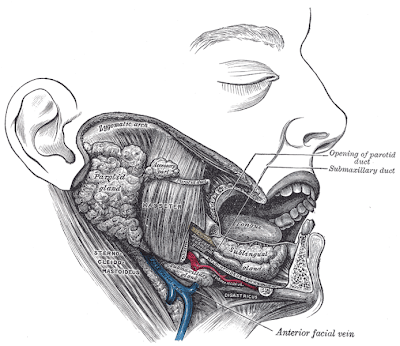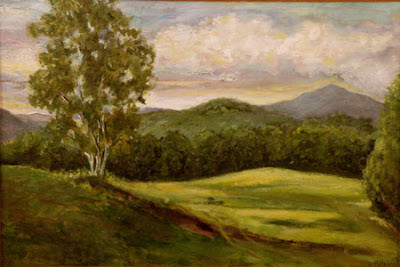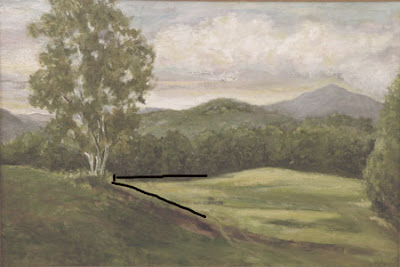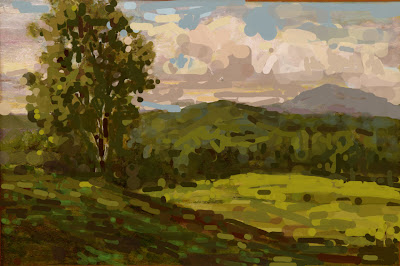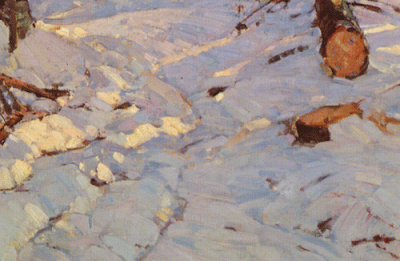 I was asked recently by a reader when a painting can be varnished? I don't know.
I was asked recently by a reader when a painting can be varnished? I don't know.Well OK, I kinda know, but its complicated. The real answer depends on who you ask. Like much of the rest of life.
WHEN YOU CHOOSE YOUR ADVISERS YOU CHOOSE YOUR ADVICE
(that might make a great neck tattoo) When you read the official "how to" texts they suggest waiting about six months or a year. I have no idea at all how I could actually do that. I don't see how any professional artist could. But if you can make a painting, store it for a year and then varnish it, that's what you should do.
I have heard some painters say that if the painting is only days old it is OK to varnish it ,because the varnish gets incorporated into the paint film as a cohesive unit. Maybe, but I think that defeats the idea of varnish in that it wouldn't be removable. Varnish is like the wax on your car, it takes the beating instead of the paint and then you strip it away and put a new coat on now and then.
But the reason we painters use varnish is that it restores the look of fresh paint to the art. As an oil painting drys it goes matt in some areas and the color fades a little bit. Putting a gloss on the surface fixes that. Here is a post on varnish incidentally. We want the painting to look colorful and fresh because we want to SELL it. We cannot afford to wait for six months to a year. Pretty much everyone I know varnishes their new paintings, often with retouch varnish.
I am not a paint chemist, and I am sure some one who reads this blog is, or a restorer, you are free to weigh in.
Here's an interesting bit of historical ephemera. In the 19th century salons, the day before the show opened was called varnishing day. Artists would be allowed to come into the exhibition space and varnish their work so it would show well. There are many stories of artists retouching their paintings etc on theses days. But I bring it up for another reason. I believe that then as well as now artists worked on pieces for an exhibition up to the last minute, if they didn't there would in fact be no need for a varnishing day as the paintings would have been done and varnished a year before. I think many were delivered wet or near wet and that is why they needed to dry and be varnished. I have had the same problem myself and solved it by visiting the showplace and varnishing my painting the day before the show opened. Therefore even 19th century academicians, master of technique, were certainly varnishing not only new paintings, but their masterpieces without waiting the requisite six months.
My conclusion is , if you can wait for six months do, but I don't see how a pro out in the market can. I varnish them because I have to. What you do is up to you and I take no responsibility for your results. Lets forget I even brought it up, OK?







